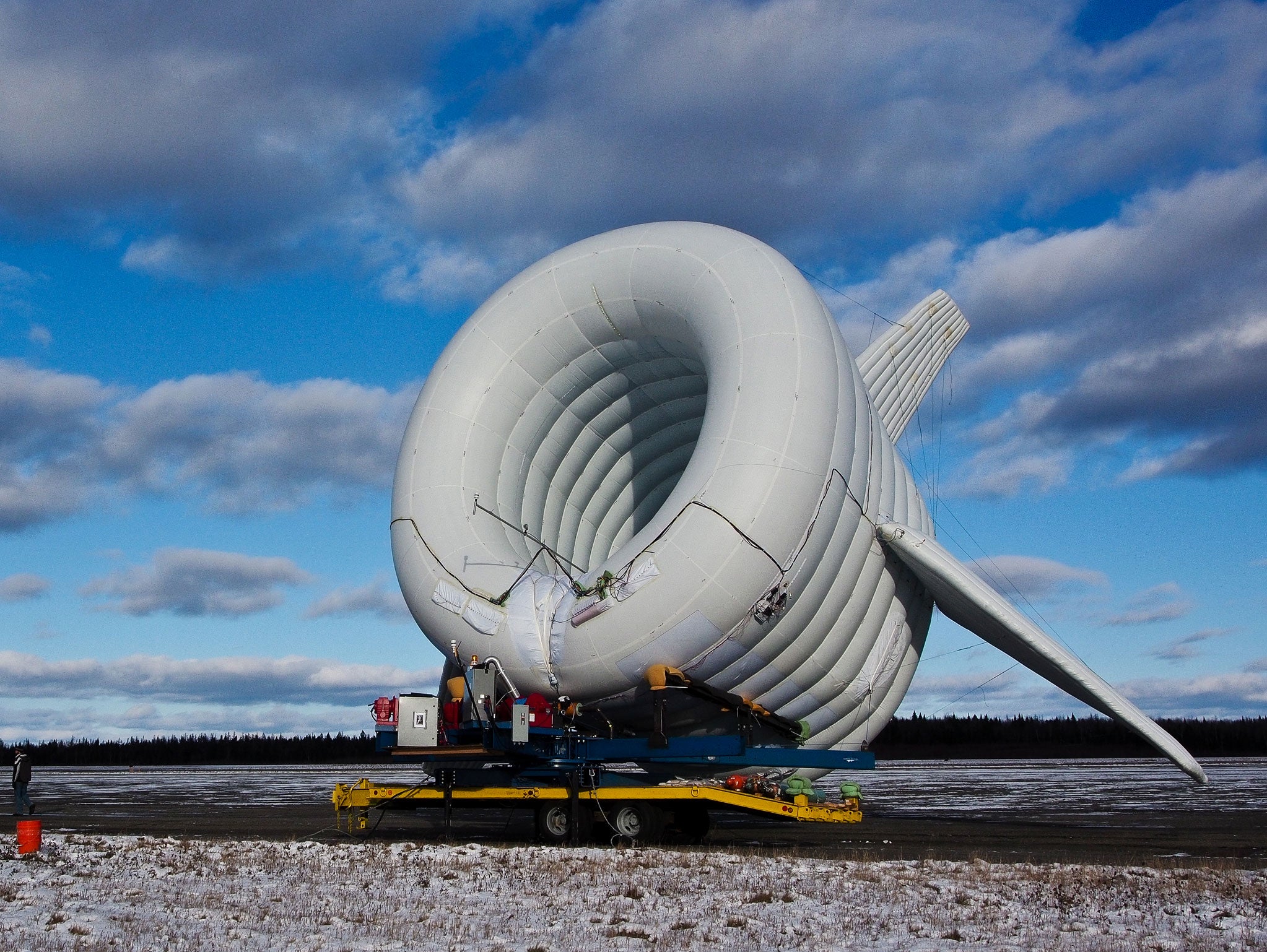Floating wind turbines could provide cheap energy in far-flung corners of the world
The inflateable structures float twice as high as fixed turbines capturing more powerful winds and can be easily moved about from location to location

A new sort of inflatable wind turbine that floats thousands of feet above the ground could be a powerful source of sustainable, low cost energy say engineers.
Altaeros Energies’ Buoyant Airborne Turbine (BAT) may look like a novelty bouncy castle, but when launched into the air it becomes a floating turbine, held in a strong, helium inflated chassis and soaring twice as high as traditional fixed turbines.
"The reason high altitude winds are so exciting and worth going after is really very simple: there’s just a lot more of it," explains Ben Glass, CEO of Altaeros Energies, in a promotional video. “Windss one to two thousand feet above the ground are on average 5-8 times more powerful than what you get on the ground.”
As the wind turns the turbines, the power is transmitted hundreds of meters down industrial strength cables to a base unit. These tethers can cope with high pressures and automatically raise and lower the turbine to exploit the fastest and most consistent winds.
“For decades, wind turbines have required cranes and huge towers to lift a few hundred feet off the ground where winds can be slow and gusty,” explains Glass.
“We are excited to demonstrate that modern inflatable materials can lift wind turbines into more powerful winds almost everywhere—with a platform that is cost competitive and easy to setup from a shipping container.”
Unlike traditional wind turbines the BAT is not intended to provide power to major grids, instead it will offer a cheap alternative to traditional energy sources in remote parts of the world or in disaster relief scenarios. As well as turbines, the BAT can also hoist cellular equipment or meterological devices into the air.
This week it will face its first commercial test as it is tried out in a number of small Alaskan villages as an alternative to costly diesel generators.
Join our commenting forum
Join thought-provoking conversations, follow other Independent readers and see their replies
Comments
Bookmark popover
Removed from bookmarks